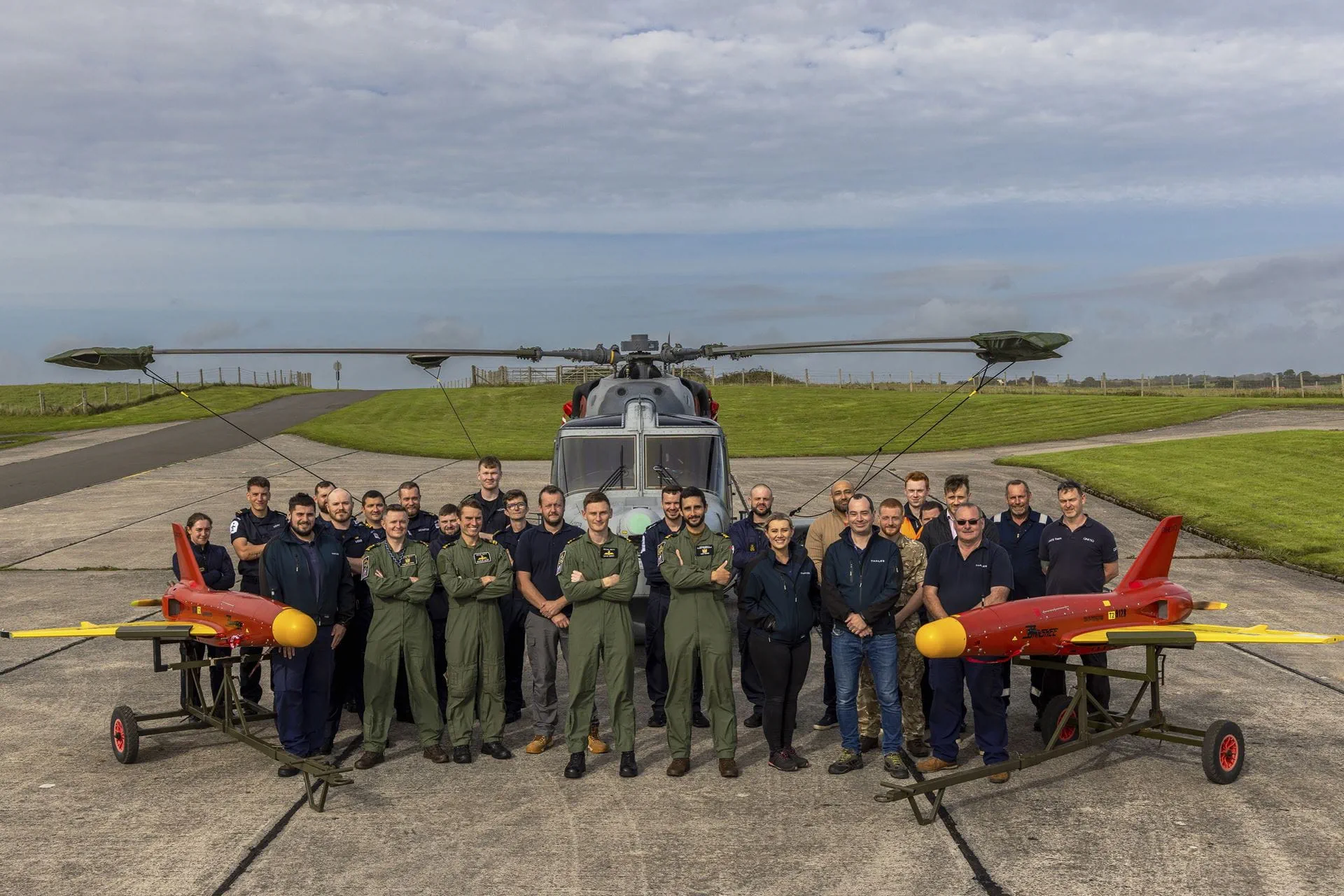The UK tests helicopter to intercept drones
3 November, 2024 Takeoff of the Wildcat HMA.2 helicopter as part of the tests. Photo credits: Royal Navy The Royal Navy of the United Kingdom has conducted tests on the use of naval helicopters to intercept drones.
This was reported by the official website of the Royal Navy. The tests were conducted as part of the integration of Martlet missiles into the helicopter's weapon system and practical testing of the capabilities to intercept small drones. The test involved a combat helicopter from the 815th Naval Aviation Squadron, which is equipped with Wildcat HMA.2 helicopters (AgustaWestland AW159).
As part of the test and live-fire exercise, which took place over the Bristol Channel off the coast of Wales, the Wildcat helicopter performed autonomous detection, acquisition, and guidance, as well as missile tracking to a jet drone for the first time. To detect the drone, the crew used a Seaspray 7400E airborne surveillance radar designed to detect surface targets, along with a Wescam MX-15Di optical unit.
Since the helicopter uses Martlet missiles with a semi-active homing head, the weapon operator maintains constant tracking of the target to ensure accurate missile engagement. During the test, the helicopter was equipped with five missiles, but there is a practical possibility of using up to 20 Martlet missiles, or a combined load of 10 missiles and 2 Sea Venom anti-ship missiles. Commander James Woods, commanding officer of 815 Naval Air Squadron, stated: "This is a fantastic development for the Wildcat HMA 2 helicopter and a significant advancement in maritime strike capability for the Royal Navy that further refines our ability to deter and neutralize airborne threats."
As the Martlet missile has not yet reached full operational capability in the Royal Navy (scheduled for 2025), the command is trying to integrate it and ensure its use against modern threats, especially small drones. This multi-purpose missile can be used against both surface and ground targets as well as air targets at ranges up to 10 km.
 Wildcat HMA.2 helicopter and Banshee 80 drones. Photo credits: Royal Navy
Wildcat HMA.2 helicopter and Banshee 80 drones. Photo credits: Royal Navy
"The helicopter's air-to-air capability and agility allows the Wildcat to respond quickly to approaching drones, providing a mobile countermeasure screen that can be changed as needed, while maintaining its ability to engage surface targets," the Royal Navy said.
It should be noted that the practice of using helicopters against drones has recently become more widespread due to the possibility of intercepting small targets in areas where air defense systems cannot be deployed or are unable to detect the target. For this reason, Israel has recently deployed AH-64 attack helicopters to intercept drones launched by the Hezbollah terrorist group. These drones, armed with 30mm cannons and AGM-114 guided missiles, were attacking air targets.
In addition, the Ukrainian Armed Forces are also actively using helicopters to intercept drones.
Both transport Mi-8s and combat Mi-24s are involved in interceptions, and drones are destroyed with both onboard guns and turret machine guns.